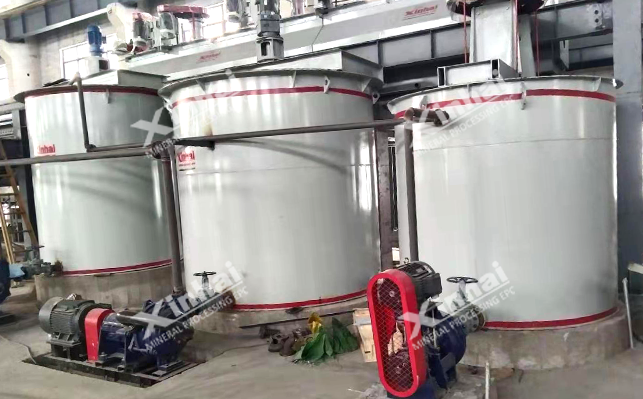
15311826613
Click to add WeChatIron is the main impurity ore that affects the purity of quartz sand. The higher the iron content of ore, the worse the quality of quartz sand and the lower the price. In order to improve the use value of quartz sand and expand the application range of quartz sand, iron removal and purification are crucial to quartz sand. Let's learn how to deal with iron in quartz sand? What methods can be used to remove iron?
At present, the available quartz sand iron removal methods include mechanical scrubbing iron removal, magnetic separation iron removal, flotation iron removal, ultrasonic iron removal, acid leaching iron removal and microbial iron removal.
Quartz sand mechanical scrubbing iron removal mainly uses the mechanical external force of the scrubbing machine and the collision and friction between sand and stone to separate the thin film iron on the mineral surface and the iron-containing impurities adhering to the mineral surface. There are two methods in the process: mechanical scrubbing machine and rod grinding scrubbing machine. This iron removal method has good effect, large output, and can meet the quality requirements of float glass for high-quality quartz sand. It is widely used in some small and medium-sized mineral processing plants.

Magnetic separation of quartz sand is to remove iron by using the magnetic properties of iron impurities. According to the application environment, it can be divided into two methods: dry strong magnetic separation and wet strong magnetic separation. Among them, wet magnetic separation can be used for iron removal. The magnetic field strength must reach more than 10,000 oersteds, which can remove impurities such as hematite, limonite and mica including conjoined bodies to the greatest extent. However, wet strong magnetic separation consumes large amounts of power, consumes large amounts of water during production, and has high overall operating costs. Dry strong magnetic separation can be used to remove iron using dry magnetic separators. The process is simple to operate, and the cost of operation and maintenance is low. It can also remove a large amount of iron impurities in quartz sand.

The quartz sand flotation iron removal method uses the different physical and chemical properties of minerals to complete the separation. During the flotation process, the slurry needs to be fed with a certain amount of mineral processing reagents (such as collectors, frothers, regulators, etc.) to make the surface of the selected or removed minerals hydrophobic. In the case of continuous generation of bubbles, the hydrophobic minerals adhere to the bubbles, float up and are scraped out by the scraper, thereby separating the quartz sand from the iron impurities. There are three methods for quartz sand flotation iron removal, namely, fluorine and acid method, fluorine-free acid method and fluorine-free acid method.
Fluoride and acid method: The flotation effect is good, easy to control, and the flotation index is stable, but the fluoride ions have a great erosion effect on the land and damage to the surrounding ecological environment.
Fluoride-free acid method: It can greatly reduce the impact of fluoride ions on the surrounding environment, and the production index is stable, but the strong acid will corrode the equipment.
Fluoride-free and acid-free method: Under natural pH conditions, anions and cations are used as collectors, and then the preferential flotation method is used to complete the iron removal operation, but this method has high requirements for the original ore and slurry environment, is difficult to control during the operation, and is less used.

Quartz sand ultrasonic iron removal is to use ultrasound to remove the secondary iron film on the surface of the mineral. When the iron film is firm and the scrubbing method cannot be effectively wiped off, the ultrasonic method can be used. When using this method to remove iron from quartz, it should be noted that the waste liquid should be removed in time to avoid secondary adhesion. This method is currently difficult to apply in large-scale mineral processing plants.
Quartz sand acid leaching iron removal is achieved by taking advantage of the fact that quartz sand is insoluble in acid (except HF). The iron impurities in quartz sand can be effectively dissolved by acid. Therefore, by using acid to treat the iron solution, a quartz sand concentrate with a higher purity can be obtained. Commonly used acids for acid leaching iron removal include sulfuric acid, hydrochloric acid, nitric acid and hydrofluoric acid, etc.

Quartz sand microbial iron removal is to use various microbial flora to remove film iron or impregnated iron impurities on the surface of quartz sand, and commonly used bacteria include Aspergillus niger, Penicillium, Pyriformis, Pseudomonas, Bacillus, Polymyxa, Lactococcus, etc.
The above are several methods for treating iron in quartz sand. The selection depends on the nature of the iron impurities in the quartz sand. It is recommended to conduct ore dressing test analysis and then design a suitable quartz sand iron removal method.